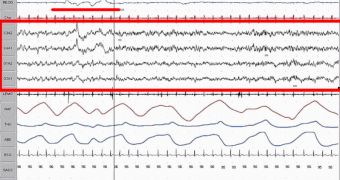In spite of being heavily researched for years, sleep disorders are still rather mysterious, and researchers are still having a difficult time understanding how they work. Now, newly-published guidelines are bound to make this a lot easier for professionals.
The document, which was published by the British Association for Psychopharmacology (BAP), was created to provide doctors and other healthcare experts with all the data they need to efficiently care for those in need.
Psychiatrists and physicians are the main categories that are targeted by the new measure. The guidelines contain the best available treatments for the vast majority of sleep disorders.
The team that conducted the new investigation is based in the United Kingdom, and was led by University of Bristol senior research fellow in psycho-pharmacology, Dr Sue Wilson.
Back in 2009, when the basis of the new work were set, experts met in London to discuss the most important sleep-related conditions, such as insomnia, parasomnias and circadian rhythm disorders.
The paper containing the guidelines has been published yesterday, September 2, in the latest issue of the respected Journal of Psychopharmacology.
In it, scientists explain that the 2009 London meeting saw numerous experts agreeing on the best possible courses of treatment for a variety of disorders. These recommendations are now listed in the BAP guidelines.
“Sleep experts agree that insomnia is a condition of unsatisfactory sleep, either in terms of sleep onset, sleep maintenance or early waking,” Bristol University experts write in a press release.
“They also agree that insomnia is a disorder that impairs daytime wellbeing and subjective abilities and functioning, and so can be considered a ‘24-hour’ disorder,” they add.
“Insomnia can also be viewed as a syndrome similar to pain, because it is subjective and its diagnosis is through clinical observations rather than measurements. In some cases physicians will be unable to pinpoint a cause, although this doesn’t prevent diagnosis,” the document goes on to say.
The condition can be triggered by a wide variety of factors, including among others shift work, major life changes or deaths in the family, stress, the birth of a new baby, and so on.
“Anxiety about sleep, maladaptive sleep habits and the possibility of an underlying vulnerability in sleep regulating mechanisms are all likely causes, as are other co-morbid disorders such as anxiety and depression, and diseases including cancer or arthritis,” the Bristol team concludes.

 14 DAY TRIAL //
14 DAY TRIAL //